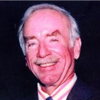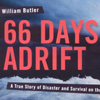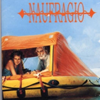COSTA RICAN THUNDERBOLT
The sailing vessel New Chance cleared El Morro of San Juan, Puerto Rico on July 26, 1994, its bow aimed at rounding Cape Horn, 7800 miles to the south. Out of the Mona Passage and two hundred mile past Hispaniola, wind and seas built to the point that my North American 40, designed by Jack Carter and built by Morgan in 1979, wanted to lift off and fly. Twenty foot breaking seas propelled us to a speed where our 7-foot fin keel vibrated with an audible hum. Two consecutive 190 mile days beat all of our previous daily runs.
None of us aboard, veteran sailor Reiner Schwebel, Paquito Diaz, my son Bill Jr., nor I had ever experienced such an exhilarating and dangerous ride. When the US Fast Frigate #52 hailed us Friday morning, the 29th of July for a look over, they for sure were convinced that the only crazies out here in such rambunctious weather had to be people in the drug business. The warship kept pace with us, as there was no way to stop New Chance nor for them to launch a boarding party, while they radioed our answers to their queries to headquarters. Just before dusk, satisfied that we were indeed a bunch of nuts, they steamed away.
Wind and seas from dead astern continued strong on the following day. We’d given up on the self steering gear as it wasn’t designed for this rough of an environment. Reiner was at the helm when a 25-foot wave broke as we bore down its leading edge. It buried the stern, along with the crew, under tons of water, part of which blasted past the flapper valve covering the engine exhaust to flood Bertha, our Westerbeke 40 diesel, with seawater. As chief engineer as well a skip, I tore into the engine compartment, removed all injectors, cranked the engine until all salt water had been blown out, squirted oil into each cylinder, and closed her up. Bertha ran like new.
Our first stop was to be a sentimental call at the port of Limon, Costa Rica. Five years earlier a Costa Rican patrol boat had rescued my wife and I after we had drifted 1200 miles in the Pacific Ocean during the 66 days that followed the destruction of our sailing vessel by whales. The press had taken us to the shrine in Carthago when we indicated that we would like to give thanks. When we happened to arrive on the feast of their patron saint thanks to our fast passage, we quickly hired a taxi to take us to Carthago, a five hour drive across the heart of the country.
People journey from all of Central America to join in the pilgrimage to the Basilica to honor Our Lady of the Angels August 1 and 2. The town was packed with the faithful. I led the crew into the rear nave where in a sealed cabinet lies the fishing rod I had cut in half and used to fight off thousands of sharks while we drifted in our small life raft.
On our return to Limon I was pleasantly surprised to meet the head of its Naval contingent, Captain Salazar, the same man who was captain of the patrol vessel that rescued us in 1989. After a long gam it was time to clear out and continue our voyage to the Horn. I put Paquito Diaz in charge of securing the departure paper work from the Port Captain, who began to play a game of hide and seek. Hours passed. We pulled up anchors and released all lines to a dilapidated dock where we had spent two nights and began to circle slowly within the bay.
It was then that I noticed a menacing dark black cloud rapidly approaching from the East. Bright flashes of lightning were following by increasingly loud peals of thunder. With a sixty foot mast, New Chance was about the tallest structure in Limon, except for a huge gantry crane across the harbor. I put Bertha in full forward until I was directly below the crane. I have never witnessed such a violent incessant electrical display of energy. Sheets of rain and gusts of fifty knots pushed us around as if we were a small cork. The crane was hit twice. An hour passed until the storm abated and we could again worry about Paquito, whom we soon picked up, soaked but with the authority from the Port of Limon to continue our voyage.
© WILLIAM BUTLER, 2004


